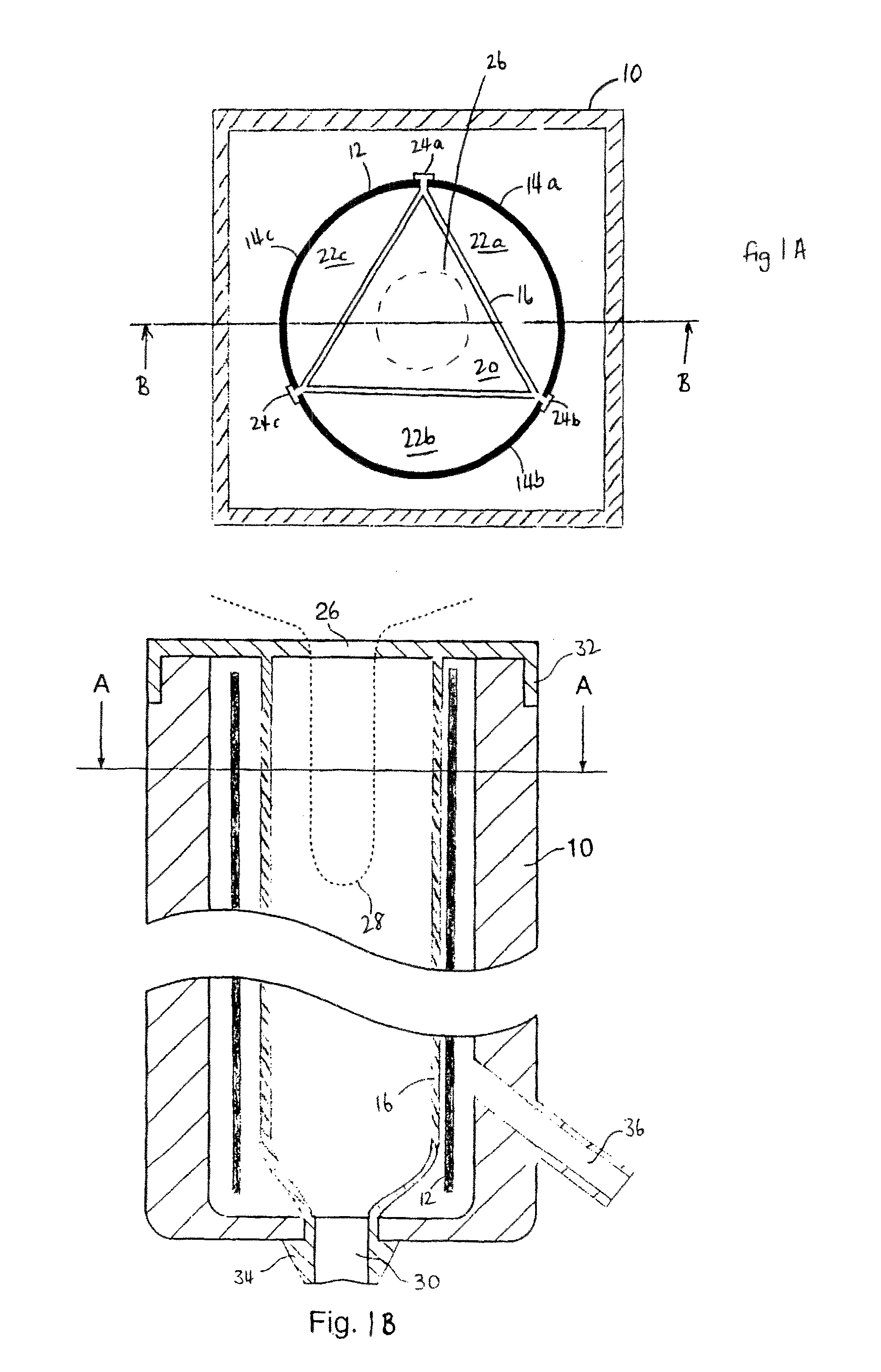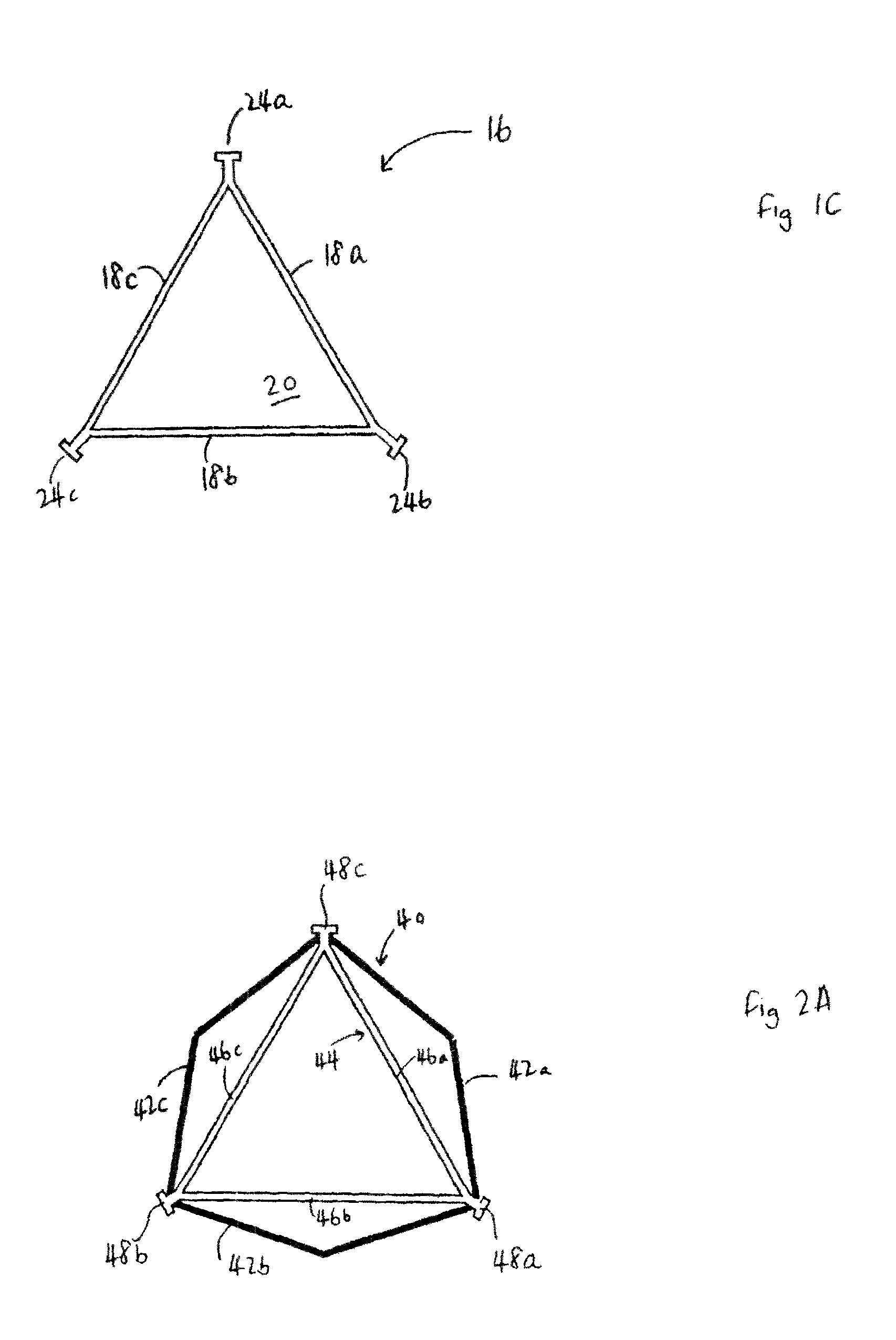Milking apparatus and method
a technology of apparatus and milking machine, which is applied in the direction of milking devices, dairy products, catheters, etc., can solve the problems of inability to achieve milking, inability to effectively milk teats, and inability to effectively control the pressure (forces), so as to facilitate the use of the support structure, improve the control of pressure, and improve the effect of membrane tuning
- Summary
- Abstract
- Description
- Claims
- Application Information
AI Technical Summary
Benefits of technology
Problems solved by technology
Method used
Image
Examples
Embodiment Construction
[0060]Referring first to FIGS. 1A, 1B, and 1C, a milking apparatus comprises an outer body 10, the interior of which is hollow and which contains a support structure 12, into which is mounted a liner 16. The support structure has three tensioning elements 14a, 14b, 14c corresponding to the three resilient membranes 18a, 18b, 18c of the liner 16. The three membranes 18a, 18b, 18c of the liner 16 are joined at their longitudinal edges to define a space 20 therebetween which is triangular in transverse section and further spaces 22a, 22b, 22c, which are each bounded by one of the membranes 18a, 18b, 18c and the corresponding tensioning element 14a, 14b, 14c of the support structure 12. Locks 24a, 24b, 24c at the longitudinal joins of the membranes 18a, 18b, 18c allow each membrane to be clipped at its edges to tensioning elements 14a, 14b, 14c of the support structure.
[0061]In this embodiment, each lock 24a, 24b, 24c is clipped to two tensioning elements 14a, 14b, 14c of the support st...
PUM
 Login to View More
Login to View More Abstract
Description
Claims
Application Information
 Login to View More
Login to View More - R&D
- Intellectual Property
- Life Sciences
- Materials
- Tech Scout
- Unparalleled Data Quality
- Higher Quality Content
- 60% Fewer Hallucinations
Browse by: Latest US Patents, China's latest patents, Technical Efficacy Thesaurus, Application Domain, Technology Topic, Popular Technical Reports.
© 2025 PatSnap. All rights reserved.Legal|Privacy policy|Modern Slavery Act Transparency Statement|Sitemap|About US| Contact US: help@patsnap.com



